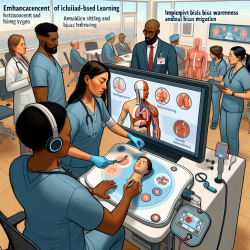Introduction: The Growing Challenge of Burnout
In the demanding world of education, superintendents are often at the forefront of managing numerous challenges, including the well-being of students and staff. One of the most pressing issues today is the increasing burnout among educators and therapists. The traditional models of in-person therapy services can be taxing, both logistically and emotionally, leading to diminished effectiveness over time. This is where the innovative approach of telepractice can make a significant difference.
The Promise of Telepractice in Schools
Telepractice, or online therapy, is a modern solution that brings therapy services directly to schools via digital platforms. It offers a flexible and efficient way to deliver speech-language pathology services without the constraints of physical presence. For superintendents looking for change, telepractice presents an opportunity to revitalize therapy services in schools, ensuring that students receive consistent and high-quality support.
Benefits of Telepractice
Implementing telepractice in schools can offer numerous benefits, including:
- Accessibility: Students can access therapy services regardless of their geographical location, ensuring that no child is left without the necessary support.
- Flexibility: Scheduling is more adaptable, allowing therapy sessions to fit seamlessly into students' and therapists' schedules.
- Resource Efficiency: Reduces the need for travel, saving time and reducing costs associated with in-person sessions.
- Data-Driven Outcomes: Telepractice platforms often include tools for tracking progress and outcomes, enabling data-driven decision-making to optimize therapy effectiveness.
Real-World Impact: A Case Study
Consider a school district that implemented telepractice through TinyEYE. Initially facing a shortage of speech-language pathologists and high burnout rates, the district turned to online therapy as a solution. Within months, they observed a significant reduction in staff burnout and an improvement in student outcomes. The flexibility and accessibility of telepractice allowed therapists to manage their workloads more effectively, while students benefited from consistent and personalized therapy sessions.
Looking Forward: Embracing Change
For superintendents seeking to inspire change and improve educational outcomes, embracing telepractice is a strategic move. It not only addresses the immediate challenges of burnout and resource constraints but also positions schools to be at the forefront of educational innovation. By integrating telepractice into school therapy programs, superintendents can ensure that their schools are equipped to meet the diverse needs of their students.
Conclusion: Inspiring Change Through Innovation
In conclusion, telepractice offers a transformative approach to delivering therapy services in schools. By alleviating burnout and enhancing the quality of care, it empowers educational leaders to create environments where both students and staff can thrive. As we continue to navigate the complexities of modern education, telepractice stands out as a beacon of hope and a catalyst for positive change.










